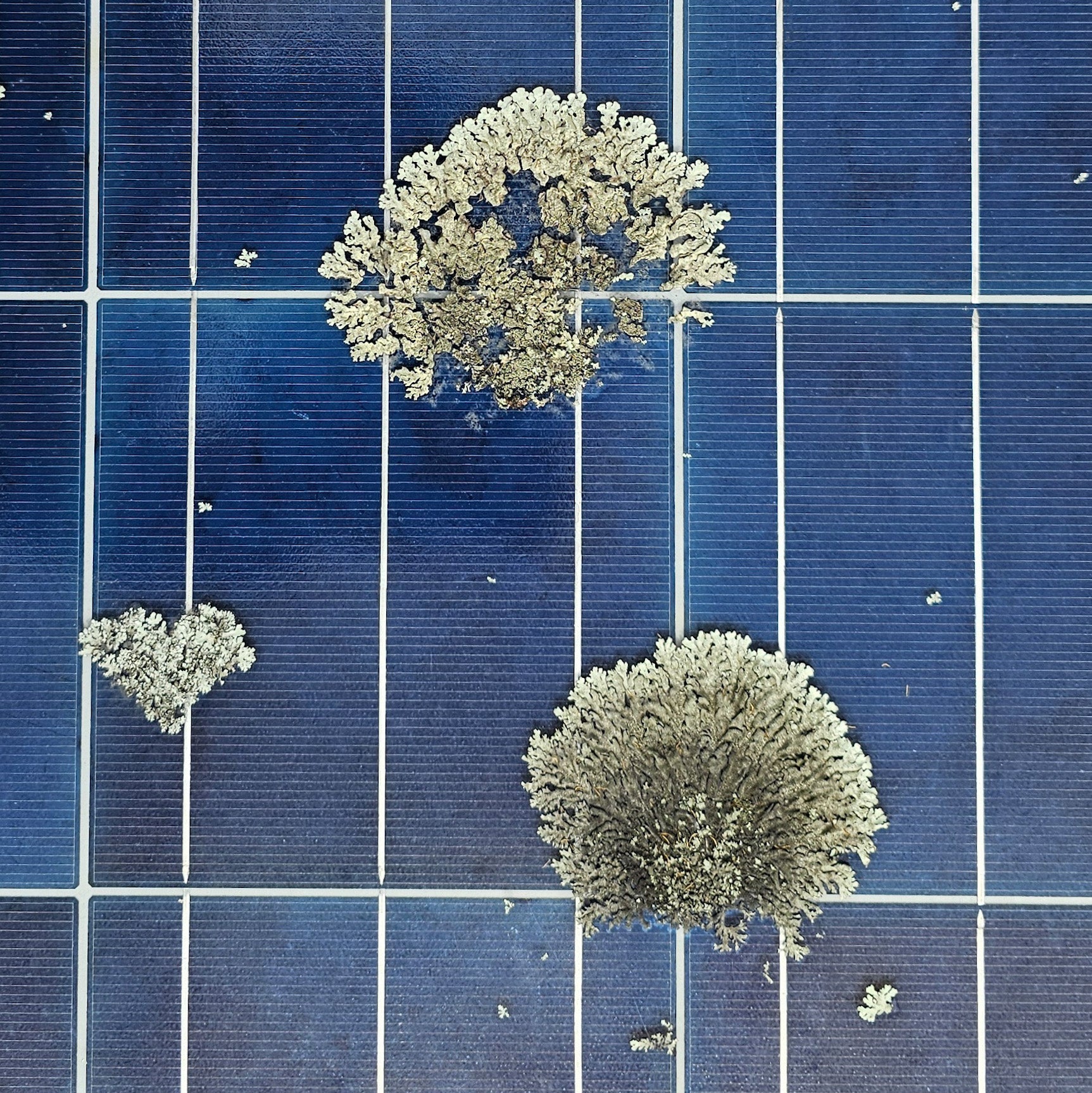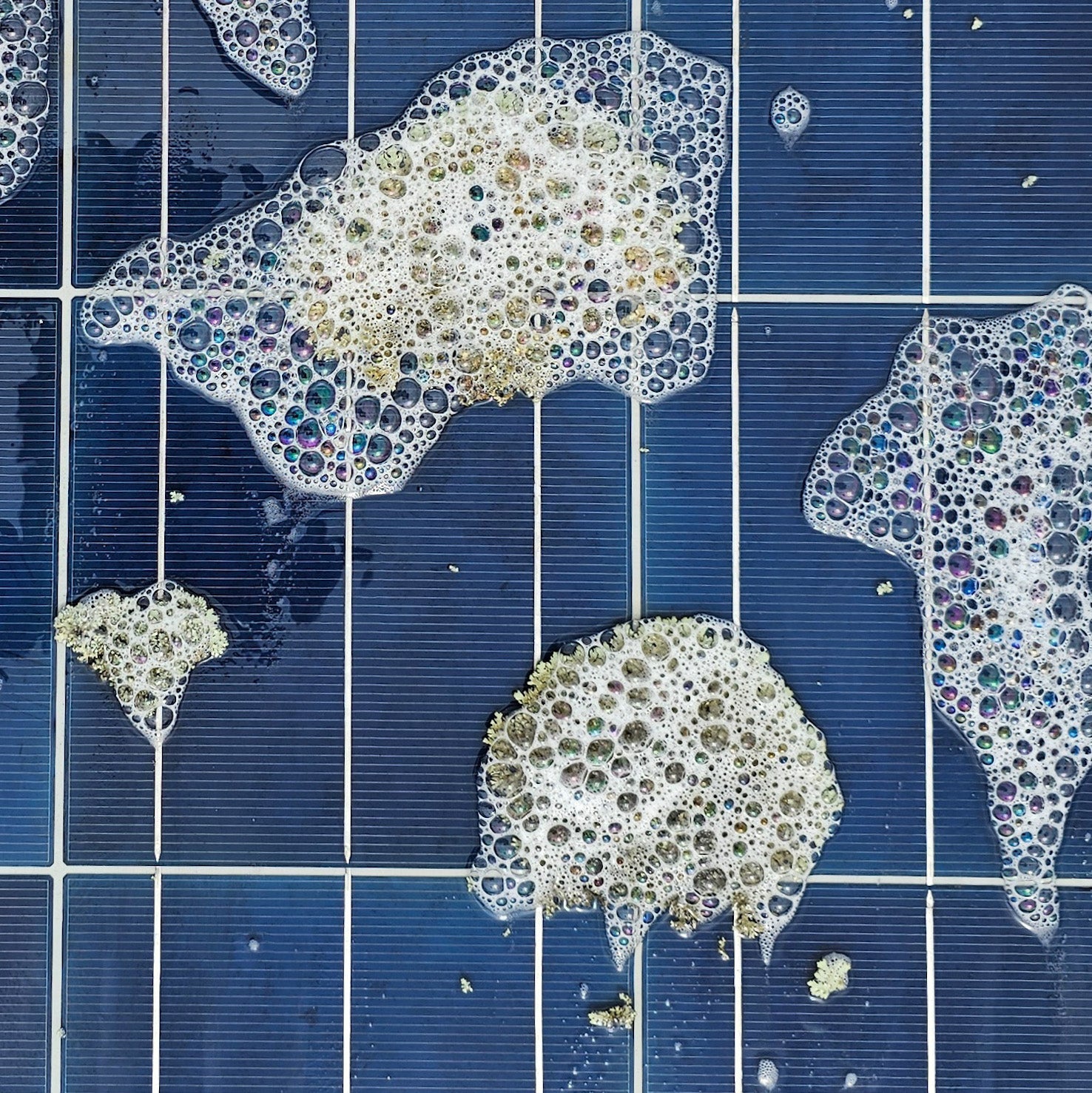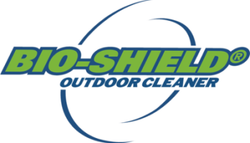Cleaning Solar Panels
How To Clean Solar Panels with Bio-Shield®
Including cleaning of:
- Solar Photovoltaic Panels
- Solar Hot Water Panels and Tubes
- Solar Pool Heating
Should I Pressure Clean or use Bio-Shield® to clean Solar Panels?
Any lichen growth on Solar panels will completely block sunlight from reaching the photovoltaic cells reducing power output, efficiency and extending payback time. Left untreated lichen will eventually cover the entire panel.
Pressure cleaning Solar Panels to remove, moss, algae and lichen may damage the panels with the high pressures required to remove lichens. Pressure cleaning is a time consuming, expensive, and ultimately futile way to clean solar panels: if they are not sterilised in conjunction with pressure cleaning, the lichen residue and spores on the surface will quickly regrow and block sunlight again.
The best method for cleaning and maintaining Solar Panel arrays are exterior cleaning solutions like Bio-Shield®.
A simple application of Bio-Shield will kill and remove the growths and keep the surface clean and the panels functioning at peak efficiency for extended periods.
Regular applications of Bio-Shield at the first sign of re-growths, typically every 2 to 3 years will effect a rapid clean up and keep the panels clean again for an extended period.
Panel Soiling - Cleaning Dust and Airborne Dirt from Solar Panels
In areas with moderate to high rainfall, airborne dirt and dust will not accumulate on angled solar PV panels.
While low levels of dust during dry periods can reduce panel output by 2 to 5%, a 5 kW residential system losing 10% efficiency generates ~50 kWh less per month, so, is it cost effective to remove the dust?
If the average cost of electricity is $0.25 per kWh, that’s $12.50 lost per month or $150 per year. Assuming professional cleaning costs $200 for each manual clean of a roof mounted system, it's more cost effective to wait for the next rain to clear the dust.
In drier and arid desert areas or some industrial installations, output losses could be as high as 20% from accumulated dust so regular cleaning may be required, depending on cost effectiveness of each professional clean. These dry areas generally do not allow algae or lichen to grow on the panels so manual washing with clean water is all that's required.
ref; Joule Vol 3 Issue 10 - Techno-Economic Assessment of Soiling Losses and Mitigation Strategies for Solar Power Generation
Why choose Bio-Shield® for Solar Panel Cleaning?
Bio-Shield® has been developed through 40 years of use in a demanding commercial environment, including extensive use on solar panels, so it works extremely well.
Bio-Shield® is a high quality product, and contains no bleach, salts, acids or phosphates and is safe to use on all types of Solar Panel
The high concentration of active ingredients in Bio-Shield® when compared to other outdoor cleaners such as Wet and Forget and 30 Seconds means it will cost less per diluted litre to cover more area at lower cost.
Bio-Shield® has been developed through 40 years of use in a demanding commercial environment, including extensive use on solar panels, so it works extremely well.
The high concentration of active ingredients in Bio-Shield® when compared to other outdoor cleaners such as Wet and Forget and 30 Seconds means it will cost less per diluted litre to cover more area at lower cost.



Bio-Shield® Application Instructions
Safety
Most falls from roofs are by homeowners working on their own roofs on the weekend. Dirty color coated roofs are slippery when wet so extreme care needs to be taken to prevent a fall.
The support frame on most solar arrays can be used as a temporary anchor point to attach a safety rope.
Check out the Jet-Stream Applicator - you can to spray an average sized roof from a ladder. If you have any doubts about your ability to to carry out this work safely then do not attempt it.
Walking on Pressed Metal Tile Roofs
To prevent damage to pressed metal tiles the best place to walk is in the centre of the tile at the bottom edge, in the 'pan' of the tile
This is the strongest part due to the design and is supported by both the tile and tile batten underneath.
Walking on Longrun Roofs
To prevent damage to longrun sheets avoid walking on the rib unless your foot is placed directly on the screw head. Walk in the pan of the sheet where its supported by the timer batten underneath.
IMPORTANT - UNWASHED AREAS
The sheltered area of a steel roof directly under the panel is considered an Unwashed Area and many steel roof manufacturers are now excluding these areas from the Warranty due to the corrosion that will form here.
This roof is damaged when slightly corrosive atmospheric dirt builds up in areas protected from rain.
We strongly recommend that these unwashed Areas are kept free of any debris and hosed out regularly in addition to Bio-Shield application to the topside of the panels
Preparation
For a successful DIY job, preparation is the key. Following these simple steps will ensure a professional looking finish and long lasting protection against regrowth blocking sunlight form the panel
Place your ladder on firm ground at the point preferably where the distance between roof and ground is smallest. For every four metres in height the ladder base should be placed 1 metre out from the spouting. The top of the ladder should extend at least 1 metre above the edge of the roof to make entering and exiting the roof as safe as possible.
Placing the ladder against the spouting brackets will reduce the possibility of breaking PVC spouting or deforming metal spoutings.
The first trip up the ladder should be to tie it to the spouting, ideally with a bungee cord or luggage tie to prevent the ladder from slipping. Coloursteel or painted spoutings should have some protection placed between the spouting and ladder to stop scratching of the coating.
Remove any loose debris, tree leaves etc, from under the panel. Hose out the area with clean fresh water and allow to dry.
Check local governing body regulations for discharge of wash water into the storm water system.
If you are on tank water disconnect the tank from the roof. It will need to stay disconnected for 2 to 4 weeks, and until the roof is flushed by enough rain to remove all traces of the Bio-Shield from the run off water. Do not reconnect the tank until the water is free of frothing or odour.
Check the weather forecast, or rain radar - no rain for 3 to 4 hours
Air temperature above 10 degrees C° will help to accelerate biocidal action.
Premix the Bio-Shield® 1 part to 20 parts water in a pressure sprayer.
If using the Jet-Stream Applicator, follow the instruction on the back label.
Bio-Shield® Mixing Ratios - for Pressure Sprayers
| Clean Water | Bio-Shield Concentrate | Diluted Bio-Shield |
|---|---|---|
| 1 Litre | 50 ml | 1.05 Litres |
| 10 Litres | 500 ml | 10.5 Litres |
| 15 Litres | 750 ml | 15.75 Litres |
| 20 Litres | 1 Litre | 21 Litres |
Application
If you have a respirator, now is the time to put it on, along with a pair of gloves and soft soled shoes and/or a pair of long pants. If you don't have a respirator, try to stay upwind during application. Evaporation of the solution on a warmer day will generate vapor that should be avoided where possible.
Application is best done on an overcast day at any time of the year, or early morning and late afternoon in summer if a warm sunny day is forecast. This slows evaporation and speeds the treatment process.
Saturation, then keeping the surface wet for 10 to 15 minutes is the Key to Success
Fill your sprayer with the premixed Bio-Shield® solution and pump it up to pressure.
Always treat the entire panel.
Ensure the lichen growths are saturated, with penetration of the solution to the substrate.
Apply to the surface in slow, even strokes. Allow the following stroke to slightly overlap to ensure even and complete coverage.
Apply a second lighter coat after 10 to 15 minutes to any areas with black algae.
This second coat is essential to ensure a good kill of these hard to remove algae.
Clean Up
Over the next few days the lichens will begin to change color as they die off.
For the initial clean up, it may take 3 to 6 months for the panels to fully clean up as rain progressively washes the
dead growths away.
Clean up times are dependent on how much growth is on the panel and the amount of rain that falls.
Maintenance
Once your panels are clean, Bio-Shield will give optimal protection with regular treatments.
Best practice is to reapply Bio-Shield at the first signs of re-growth. Typically this will be every 2 to 3 years.
The two or three yearly applications will be easier, faster and with a spread rate up to 8m2 per diluted litre, will use less solution. Any light new growths will die off and the panels will clean up quickly.
